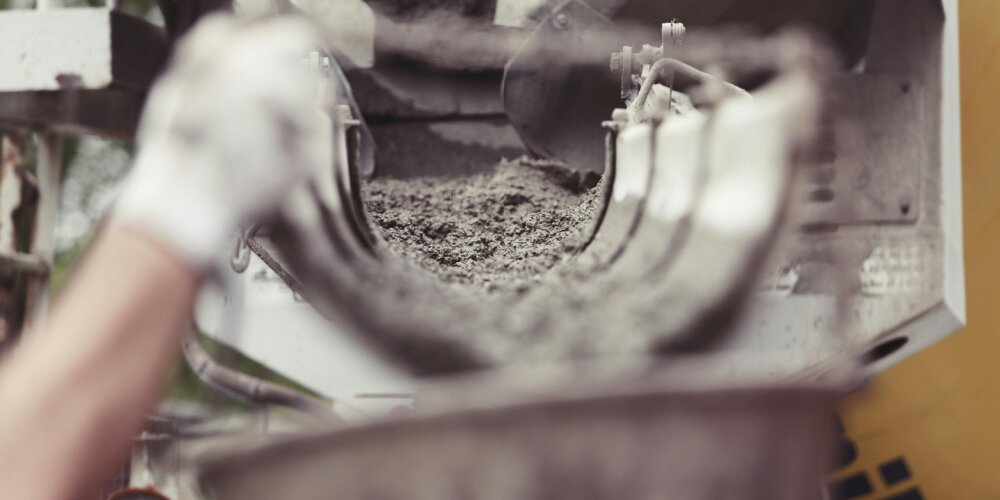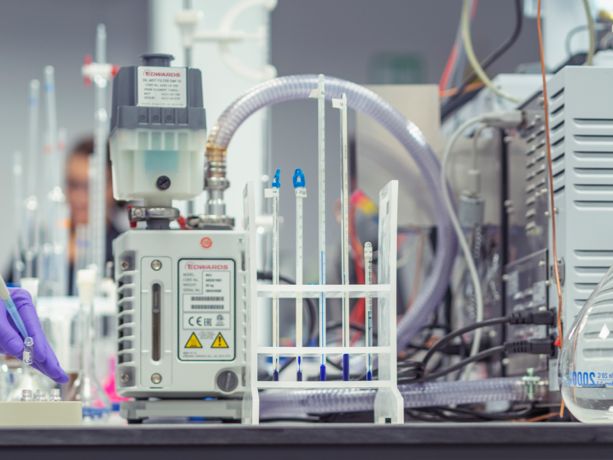Engineers Test New Method to Store Carbon Dioxide in Concrete

Cement and concrete production are responsible for approximately 8% of global greenhouse emissions. With this unavoidable figure, scientists and engineers are continually looking for innovative ways to reduce concrete carbon emissions.
Contributing to this effort, engineers from Northwestern University have developed a new method for capturing carbon dioxide during concrete manufacture using a carbonated water solution.
Concrete is made with a mixture of water, fine and coarse aggregates (like sand and gravel respectively), and cement, which is used to bind everything together. According to Alessandro Rotta Loria, the Louis Berger Assistant Professor of Civil and Environmental Engineering at Northwestern’s McCormick School of Engineering, and study lead, ‘the idea is that cement already reacts with CO2. That’s why concrete structures naturally absorb CO2.
But, of course, the absorbed CO2 is a small fraction of the CO2 emitted from producing the cement needed to create concrete.’
This isn’t the first time concrete has been considered as a carbon capture receptacle. Research has been ongoing since the 70s. Concrete carbonation tends to fall into one of two categories:
- Hard concrete carbonation: this method involves sealing solid concrete into a chamber, which is then injected with high pressured carbon dioxide.
- Fresh concrete carbonation: in this process, carbon dioxide is injected into the concrete mixture during production (before setting).
However, the problem with both of these carbonation methods is that they typically compromise the quality and strength of the resulting concrete – reducing possible uses within the construction industry. They also incur high energy costs for a limited carbon capture efficacy, once again reducing their commercial feasibility.
So how does their new method differ?
Drawing on the idea of fresh concrete carbonation, the team from Northwestern experimented with when to add the carbon into the mix.
Rather than incorporating carbon into the whole mixture, the team injected CO2 into a solution of water and a small amount of cement, before adding this solution to the rest of the components. Rotta Loria explains that this method results in ‘a much lower viscosity fluid compared to the mix of water, cement and aggregates’. This allows the team to combine the rest of the concrete mix much faster, ‘and leverage a very fast kinetics of the chemical reactions that result in calcium carbonate materials’ to produce a strong, durable end result.
In fact, after testing the team believes that their method of concrete production is on par with, if not superior to, regular concrete. Whilst further testing into the strength of their concrete is required, preliminary results show that at least their carbonation method doesn’t compromise the quality, meaning the usability of this concrete blend isn’t affected.
Overall, Rotta Loria explains that ‘we are trying to develop approaches that lower CO2 emissions associated with those industries and, eventually, could turn cement and concrete into massive 'carbon sinks.' We are not there yet, but we now have a new method to reuse some of the CO2 emitted as a result of concrete manufacturing in this very same material. And our solution is so simple technologically that it should be relatively easy for industry to implement’.
The Lab: materials excellence in the North-West
Kitted out with advanced testing equipment, and backed by decades of practical experience, The Lab is one of the premier materials testing facilities in the UK.
Whether you need an in-depth, impartial failure investigation, sample handling and preparation, or more specific materials analyses, our expert teams are on hand to help. Contact us today for more information and to book a no-obligation consultation to find out how The Lab can help you.
Find more materials testing services with The Lab today
For more of the latest news and information, as well as new industry insights, explore The Lab’s News and Knowledge Hub…
Scientists Convert Sewage Sludge into Activated Carbon | New Method Turns Red Mud into Green Steel | Can Using Graphene Aggregate Make Better Concrete?
- Date
- 27/09/2024
